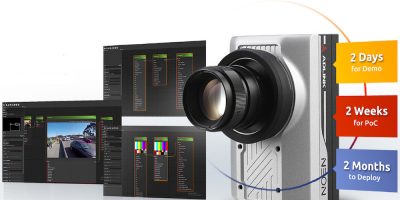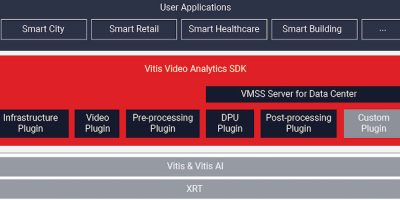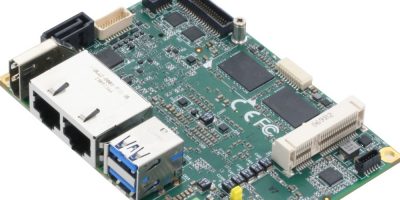Users can develop a proof of concept (POC) for edge artificial intelligence (AI) vision applications in two weeks, using the Edge Vision Analytics (EVA) software development kit (SDK), says Adlink.
The SDK supports includes a no-code graphical user interface (GUI) and support for more than 10 types of cameras, field-ready plug-ins, ONNX runtime, TensorRT and OpenVINO for fast AI inference validation. The SDK’s integrated development environment (IDE) is currently built into Adlink’s NEON series AI smart cameras and EOS series AI vision systems for AI-enabled machine vision project development.
It is a one-API framework that lets users build edge AI vision applications with minimal coding. Users without deep AI knowledge or expertise can use plug-ins and reference codes to develop an edge AI POC using the drag-and-drop GUI.
The GUI allows easy switching of image sources, image processing adjustment, and AI models to shorten the development time. Each step can be reviewed, from image capturing, image pre-processing to AI inference, to verify and debug if necessary, shorting the time to deployment.
Currently, EVA SDK can be used in a wide range of applications, including safety AI, behaviour analysis, object detection and object classification, for use in smart factories, semiconductor, electronics and automobile manufacturing.
Adlink also offers the Fast AI PoC Kit including the all-in-one NEON AI smart camera with accessories for EVA SDK, to shorten the integration time for hardware and software.
EVA SDK will continue to release more reference codes to support more edge AI applications.
Adlink is an industrial AI vision expert with 25 years’ of experience in machine vision. It provides application-oriented, ready-to-develop AI models to manufacturers.
Adlink Technology manufactures edge hardware and develops edge software for embedded, distributed and intelligent computing – from powering medical PCs in the intensive care unit to building the world’s first high-speed autonomous race car.
The company holds top-tier edge partnerships with Intel, Nvidia, AWS and SAS, and also participates on the Intel Board of Advisors, ROS 2 Technical Steering Committee and Autoware Foundation Board. Adlink contributes to open source, robotics, autonomous, IoT and 5G standards initiatives across more than 24 consortiums, driving innovation in manufacturing, telecommunications, healthcare, energy, defence, transportation and infotainment.







